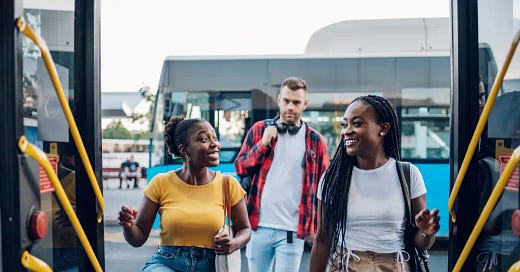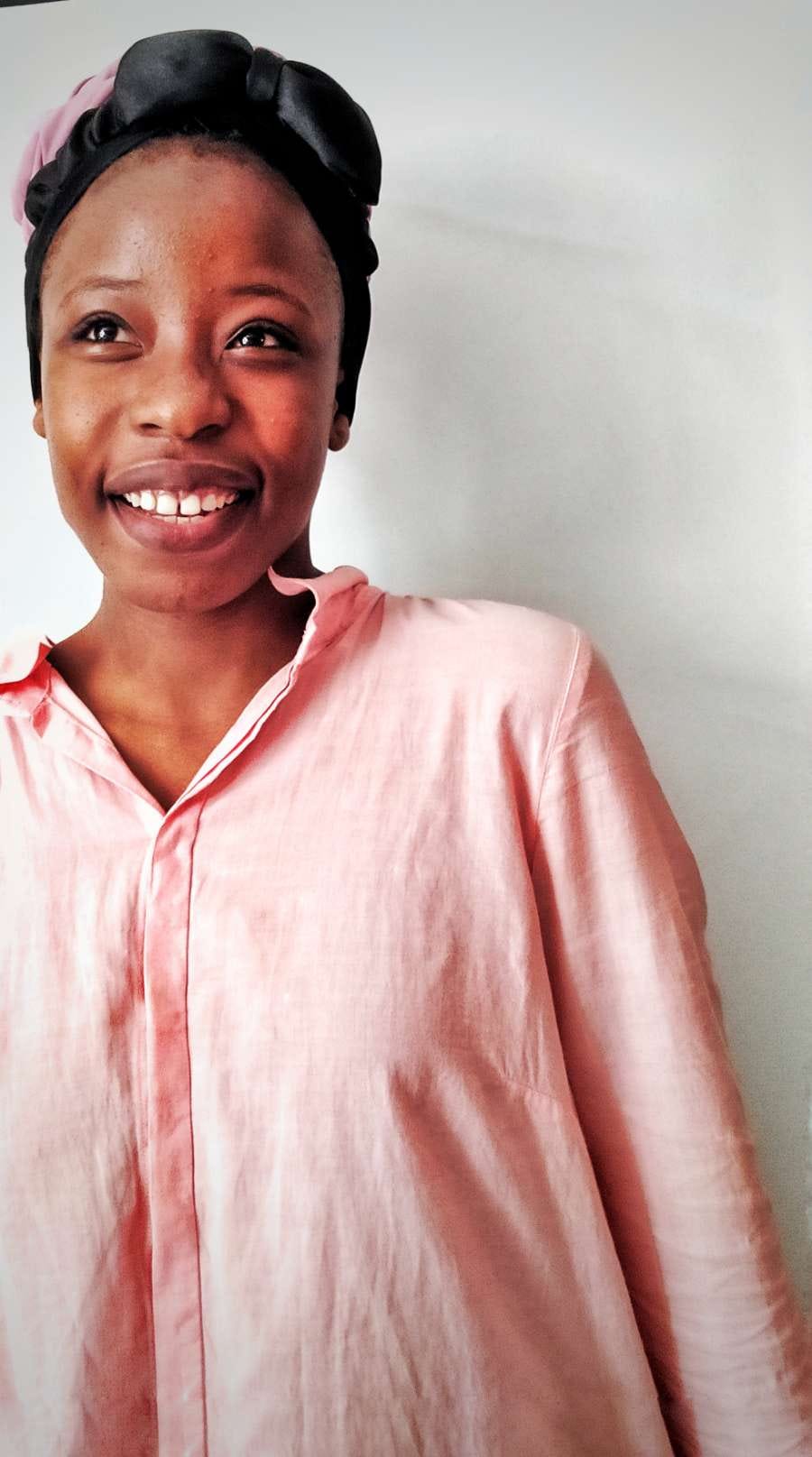Hey y’all,
I hope your weekend was filled with good rest, good food, and good people. If not, there’s always this week and the next and the next to try again.
I have two cool things to share!
First, about me, I applied to the New Voices Madame CJ Walker PACE Bootcamp and got in! They received tons of applicants, and ya fav editor made it through. Through this 13-week entrepreneurship course, I’m going to be learning a bunch, networking with other Black women builders, and at the end of it all, making Carefree bigger and better for you.
Second, we’re running a book giveaway! It’s fall, which means it’s almost time for “cozying up with a good book on the couch while sippin’ something good” weather (unless you’re also in California, where the summer sun has been unrelenting and choosing violence to this day). I recently finished reading Maame, and I enjoyed it so much that I want y’all to read it too. From eldest daughter syndrome to dealing with immigrant parents as a first-gen, navigating dating in your 20s, unlearning sexual shame, and trying to make it in publishing—this book has it all.
I’m giving away two copies of Maame by Jessica George, a Today Show Read With Jenna Book Club Pick.
How To Enter:
Subscribe to Carefree Magazine if you’re not already
Subscribe to ANAYOTOTHE
Refer Carefree Magazine to a friend and ask them to subscribe. Once they subscribe—you’re entered!
That’s it! Easy breezy beautiful cover girl. Enter by Oct 25th. Winners will be announced on October 28th right here. U.S. entries only.
This Week’s Story
If you feel like you just go from school, to work, to home, and back, you’re not alone. Third spaces are disappearing, and Black women are the most affected by it. However, in this week’s story by author Maryam Ibrahim, she explores how Black women are reclaiming third spaces and even creating new meaning behind the term.
Take care,
Anayo Awuzie
EIC of Carefree Media
Taking Up Space: How Black Women Are Reclaiming Third Spaces
by Maryam Ibrahim
My earliest recollections of third spaces came from watching movies. The characters always had their go-to places—cafés, libraries, beaches—spaces where they could escape the pressures of society, breathe freely, and reflect. These spaces seemed so effortlessly available, places where the outside world couldn't touch them. But as I’ve grown older, I’ve realized that third spaces, at least in the context of my life, aren’t that accessible. In fact, they’re often capitalized on and monetized to the point where you have to pay for the privilege to be there. Cafes require you to buy overpriced drinks just to sit down, beaches are attached to private resorts, and libraries are few and far between, especially in urban areas. If you can't afford to spend money in these places, you simply don’t belong.
Beyond the financial barrier, there has always been another unspoken rule for girls like me, especially growing up in Nigeria. We were never socialized into third spaces. For little boys, the world outside was a playground, but for little girls, the message was clear: stay home. Home was where you were safe, while there was always someone looking to harm you outside. The idea of a third space—somewhere to exist freely without societal pressures or expectations—was never something we were taught to seek.
So, What Exactly is a Third Space?
The idea of Third Spaces blends together different social and educational theories, all centering around how people connect with the world outside of their homes and jobs. In a sociological sense, Third Spaces are places where people gather casually—cafes, parks, libraries—places meant for socializing and unwinding. Its built on a simple concept: humans need a space to relax and interact without the strings attached to daily obligations.
These spaces are where relationships are built and communities are formed. From an educational perspective, Third Spaces also play a role in childhood development, helping kids learn social and language skills, and later, shape their own identities. At its core, the Third Space is about finding a place to just be—away from the demands of daily life.
I’ve been trying to paint a picture of what Third Spaces mean, but unfortunately, the reality isn’t as ideal as it seems. While these spaces are supposed to be open for connection and community, capitalism has increasingly encroached upon them.
More people are starting to catch on to the fact that capitalism thrives by commodifying every aspect of our lives—and Third Spaces are no exception. Cafes, parks, and beaches—once open areas for socializing—now often come with a price tag. Whether it’s paying for an overpriced coffee just to sit in a café or access fees to certain beaches, the freedom of these spaces is becoming more exclusive, reserved for those who can afford them. On the other side of the coin, cities are prioritizing these spaces less in favor of commercial property. Major American cities like New York and Chicago thrive on third spaces, but many cities have foregone even offering benches to sit on at a bus stop, or don’t offer sidewalks to walk to a local coffee shop.
As this shift happens, more people are starting to talk about how capitalism not only commodifies products but also commodifies experiences, relationships, and even the spaces where we interact with one another. It’s a critique that’s growing louder—the realization that what should be communal, public, and accessible for everyone is now just another opportunity for those at the top to make money, leaving the rest of us to pay for what used to be free.
When we think about who gets to hang out in Third Spaces, it’s clear that race, gender, and class play huge roles—especially for women. From an early age, girls often aren’t encouraged to explore the world outside their homes. While boys might roam parks and playgrounds, girls are usually taught that they should stay home or stick close to family
As women grow up, the situation doesn’t get any easier. When we marry, we often have to leave behind the communities that helped shape ourr identities. This transition further isolates women, making it harder to find a sense of identity in a new social landscape.
Motherhood adds yet another layer of complexity. Society often expects mothers to shoulder the bulk of parenting responsibilities. This can mean that wherever their children go—playgrounds, schools, or home—that’s where they have to be too. As a result, women may lose touch with Third Spaces that allow them to relax and be themselves, further tying their identities to their roles as caregivers.
When Black women occupy third spaces, unless they’re Black-owned and centered, it is common to have to navigate them differently. In predominantly white societies, there’s a sense of always being watched. You enter a coffee shop or park, and suddenly, you’re not just a person looking for a break—you’re a subject of curiosity or suspicion. The pressure of racial stereotypes lingers in the air, making third spaces less about relaxation and more about constantly negotiating your place in them, which adds a layer of self-awareness that defeats the entire purpose of a “third space.”
How Black Women are Creating Third Spaces for themselves
Through conversations with my network, I’ve learned of the many diverse ways we as Black women are recreating third spaces that are for us, by us, and cultivating community and belonging. For some, volunteering for women’s causes became a powerful method of building third spaces, not just for activism but for creating connections with like-minded individuals. Volunteering merges advocacy with solidarity, giving Black women a sense of belonging while making a difference.
Another common thread was book clubs—safe sanctuaries where Black women can gather, share ideas, and build relationships around literature that often resonate with our lived experiences. These gatherings aren’t just about reading books, but finding spaces where our voices, stories, and perspectives were centered, away from societal expectations.
One unexpected example came from a group of women who found third spaces in their cars. For them, their vehicles became personal, mobile sanctuaries, offering them privacy, solitude, and a break from societal pressures. These women carved out small but significant moments of peace where they could reflect or simply enjoy their own company, away from the gaze and judgment of the outside world.
Self-care also plays a key role in how Black women are transforming third spaces. For many, especially those running small businesses focused on hair care or skincare, self-care becomes community care. Their work offers Black women spaces where they feel valued and nurtured, fostering a sense of belonging. These care-centered businesses turn individual self-care rituals into collective moments of healing and affirmation, where Black women come together to care for one another.
On a more personal level, I’ve experienced the power of online communities as modern third spaces. After COVID altered access to physical spaces, I joined The Emecheta Collective, a post-COVID group where we have discussions, hangouts, and share our experiences. It became a vital third space for me, emphasizing how the pandemic reshaped our need for community. The virtual space allows us to connect and support each other, especially when physical spaces are inaccessible or inhospitable, showing how Black women are increasingly navigating digital spaces for connection and solidarity.
Interestingly, for some Black women, hobbies have become a key part of recreating third spaces. Many of these hobbies—gardening, knitting, baking—are typically home-based activities, often associated with the second place. Yet, they’ve become avenues for women to create moments of joy, relaxation, and self-expression within the home. These hobbies allow them to disconnect from the pressures of work and home life, creating reflective spaces within environments traditionally linked to obligation.
These examples illustrate how Black women, in different parts of the world, are carving out spaces for themselves where traditional third spaces fall short or are inaccessible. Whether through volunteering, book clubs, cars, self-care businesses, or online communities, Black women are continuously finding new and inventive ways to reclaim and create spaces that reflect their unique experiences and needs.
Maryam Ibrahim is a Nigerian writer, journalist, and health researcher. Undergoing a Bachelor of Nursing Sciences from the University of Ilorin, she brings her expertise in community health education and digital health innovation into her writing. Maryam's work explores a range of topics, including reproductive justice, women’s health, and societal issues, with a focus on amplifying Black women’s voices and experiences. Her articles have been featured in notable publications such as Document Women, Communa Magazine, and Adventuresfrom Mag. She is also an experienced SEO writer and project manager, committed to promoting equity and social change through her work.










I desperately desire for Black spaces where I live.
Thank you. I guess I’ve never thought about my own existence and experience like this. The words ring true. Interestingly the Bookclub I’m in and my car are my spaces too.